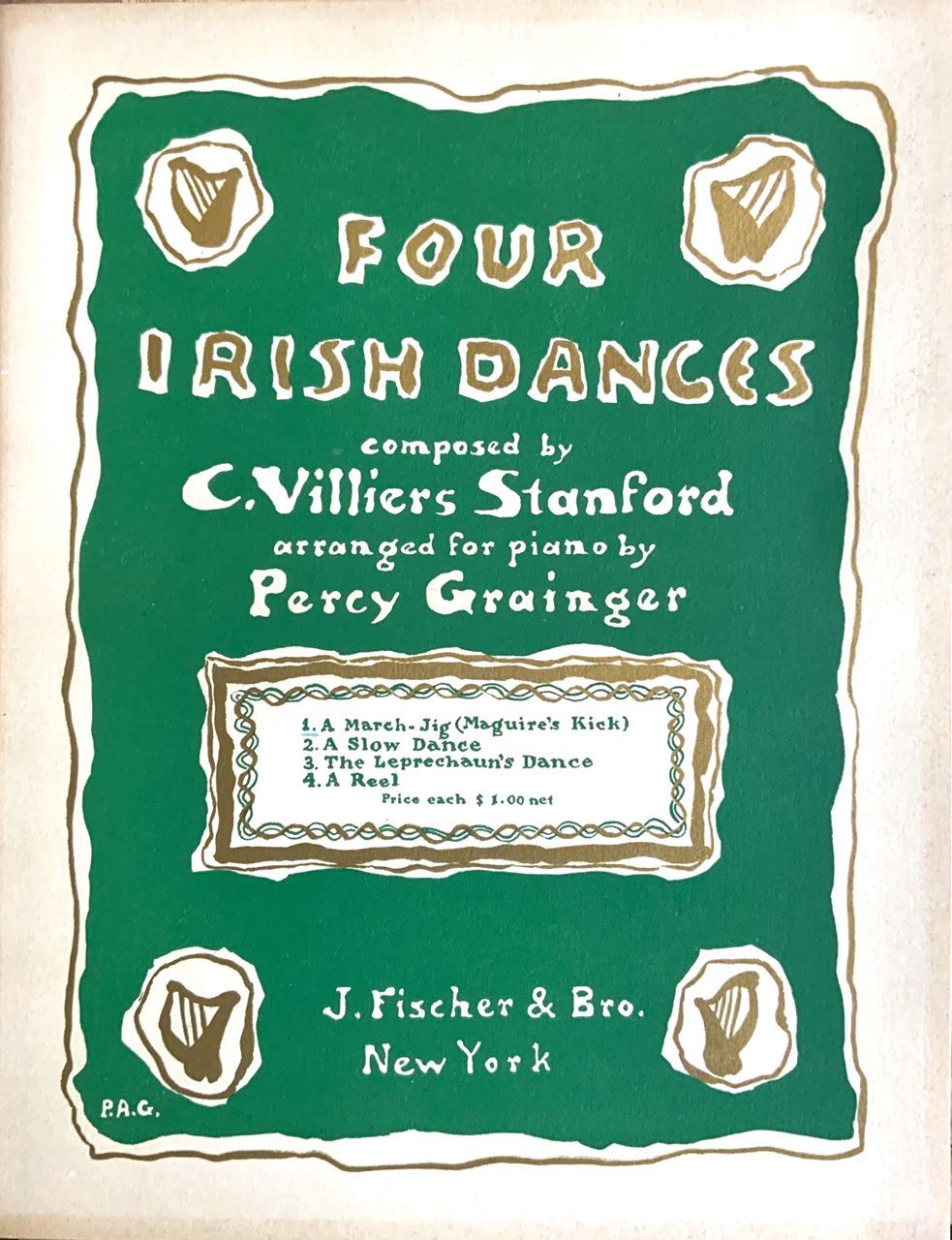
What are the first colors of spring you notice?
For me it is the chartreuse green of the weeping willow trees and the vivid green hues of moss that emerge as the snow finally melts away. Looking through images for this blog post I came across Percy Grainger's 1916 illustrated cover of Four Irish Dances, the obvious choice for this March edition. Grainger documented folk music arrangements preserving for posterity the legacy of these unique musical styles. Through Grainger’s music, letters, photographs, program notes, newspaper promotions, and reviews he leaves us ample documentation of his influence and legacy. With investigative work we can piece together a timeline, a progression. You can see the patterns of daily life over a lifetime and begin to contextualize his contributions. Seeing how one note led to the next.
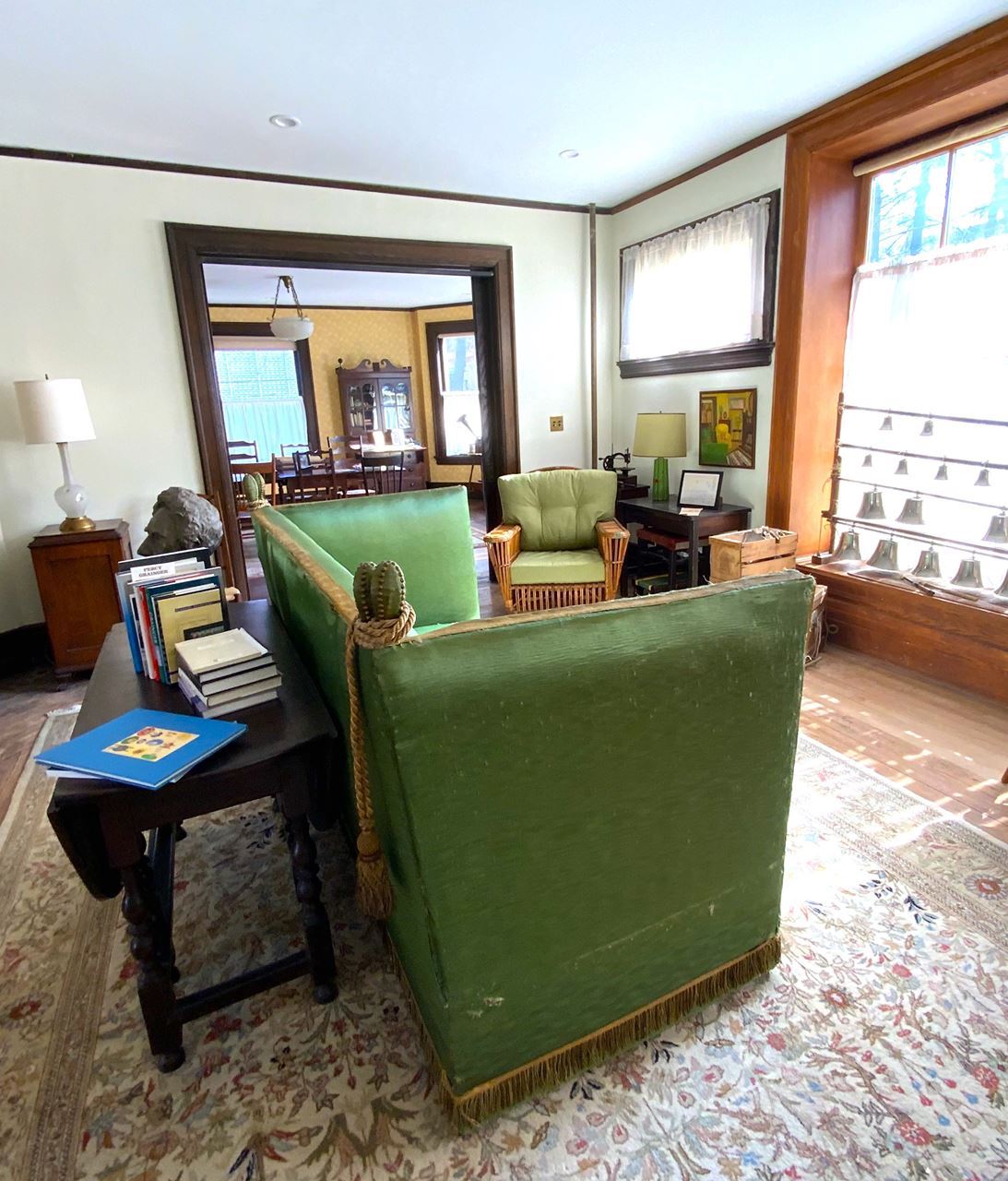

Here at the Percy Grainger House and Studio I am helping to preserve the environment in which he created this work. As a graduate student working towards a master's in museum studies, I began an internship here last summer. My weekly visits to 7 Cromwell Place have been a delight in assisting with the work of uncovering, documenting, and cataloging the objects in the house. There is an intimate feeling here, like one of the Graingers might simply walk in the front door at any moment. I am learning how Percy and Ella lived and worked in the house over a span of forty plus years. This work is about peeling back the layers as much as it is about building an archive of information.
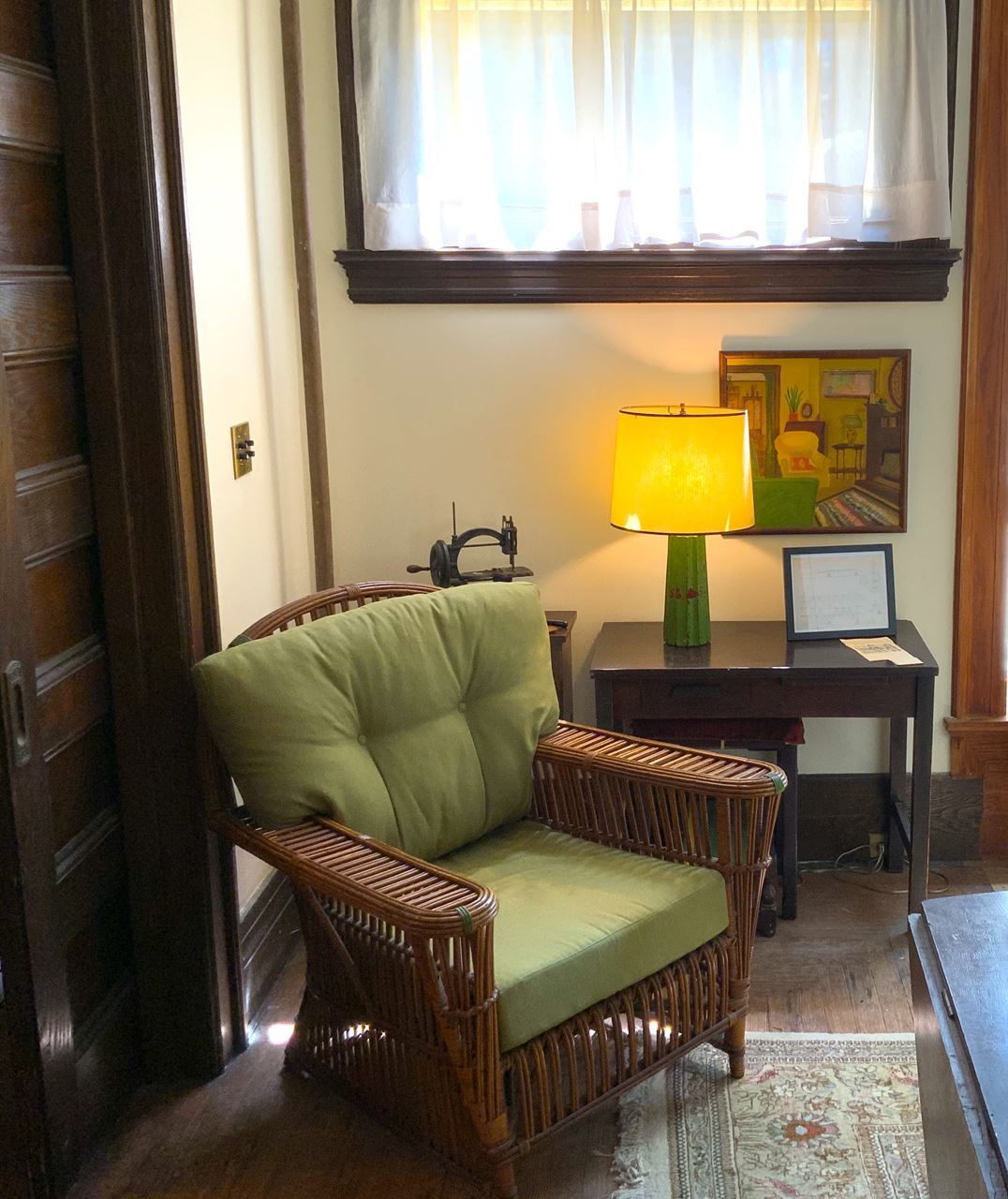
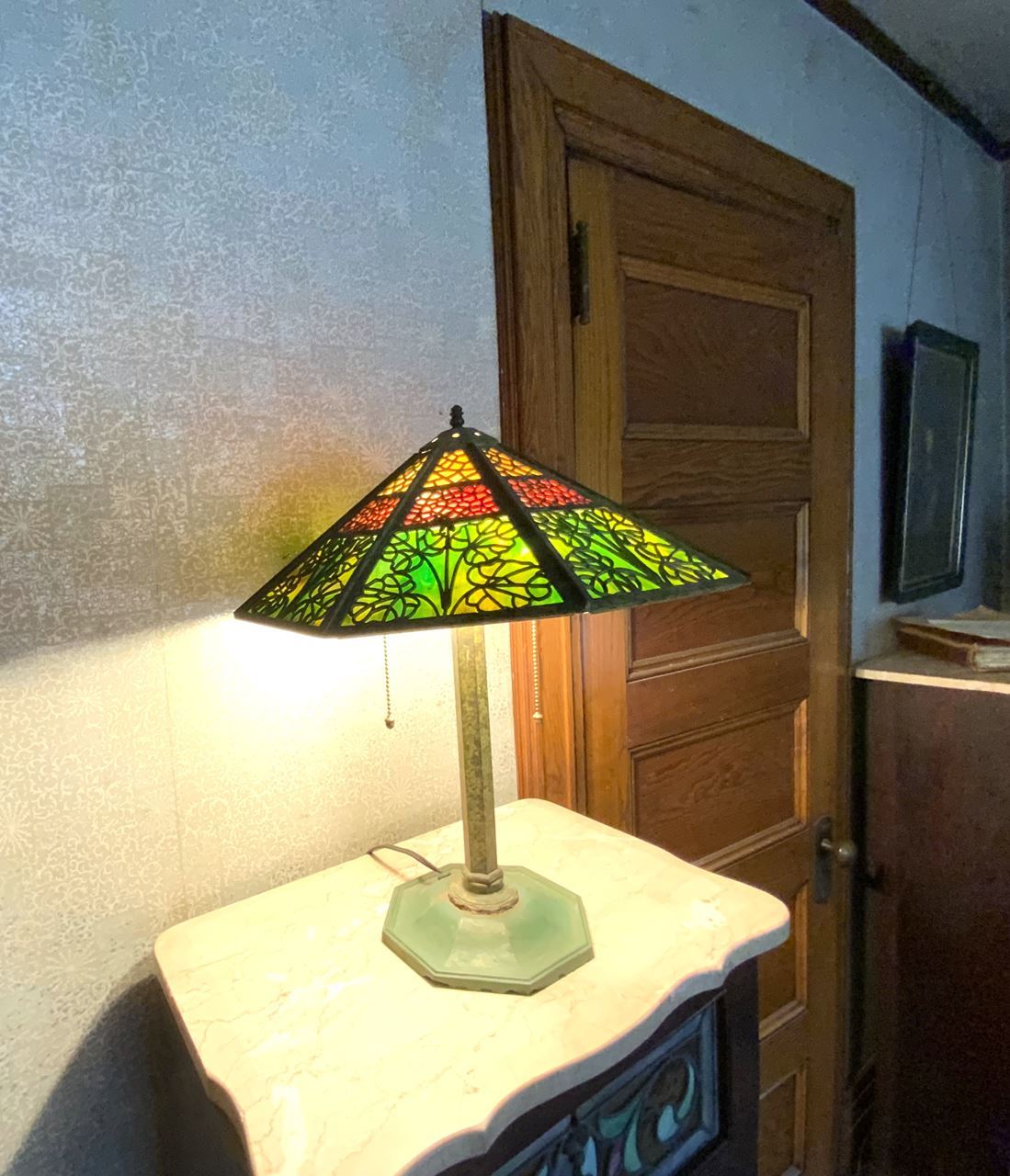
There are many stories to tell here, and one of them can be told through examining the physical house the Graingers lived in at 7 Cromwell Place, in downtown White Plains, New York from 1921-1979. One of the first things I noticed was that the color green is everywhere in the interior design and architecture of the home. Popular in industrial and decorative designs from the 1920s through the 1950s, the color green was ubiquitous with the modern era home. McCoy Pottery, Fiestaware, linoleum rugs, textiles, kitchen utensils, and appliances, were all readily available in shades of green.
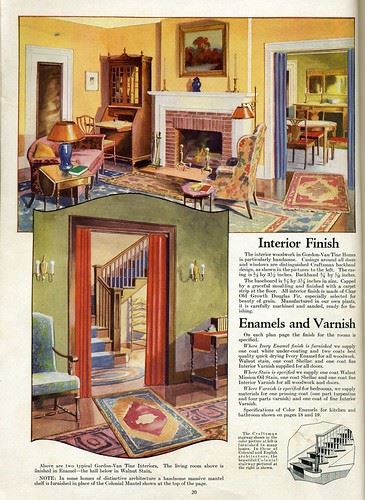
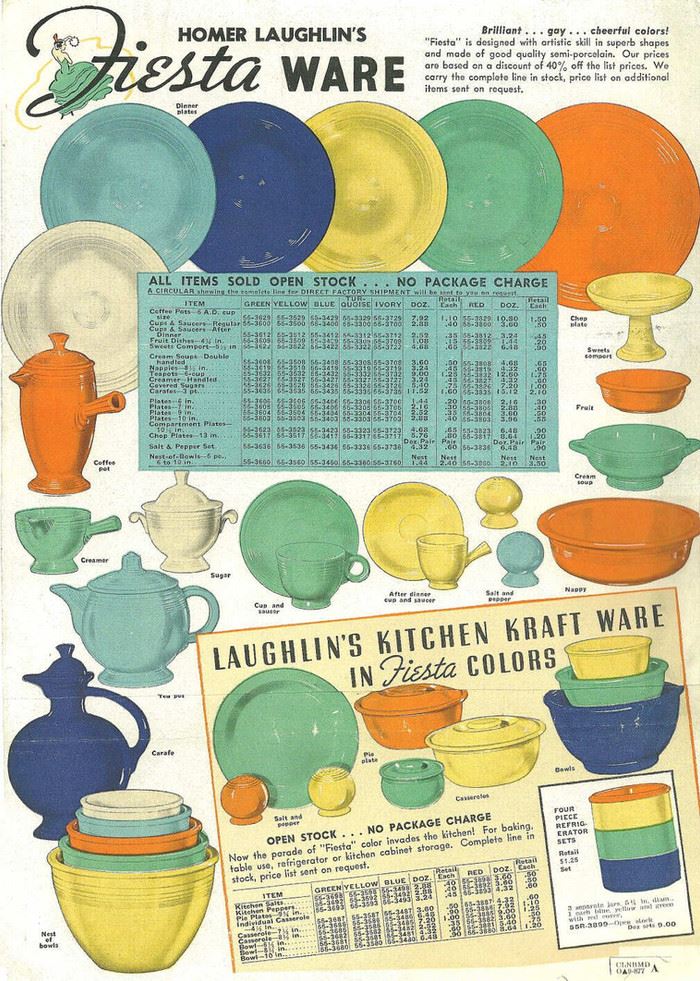
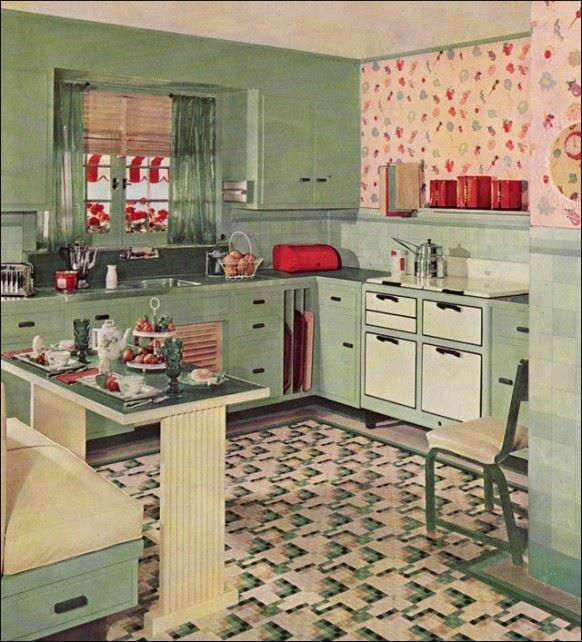
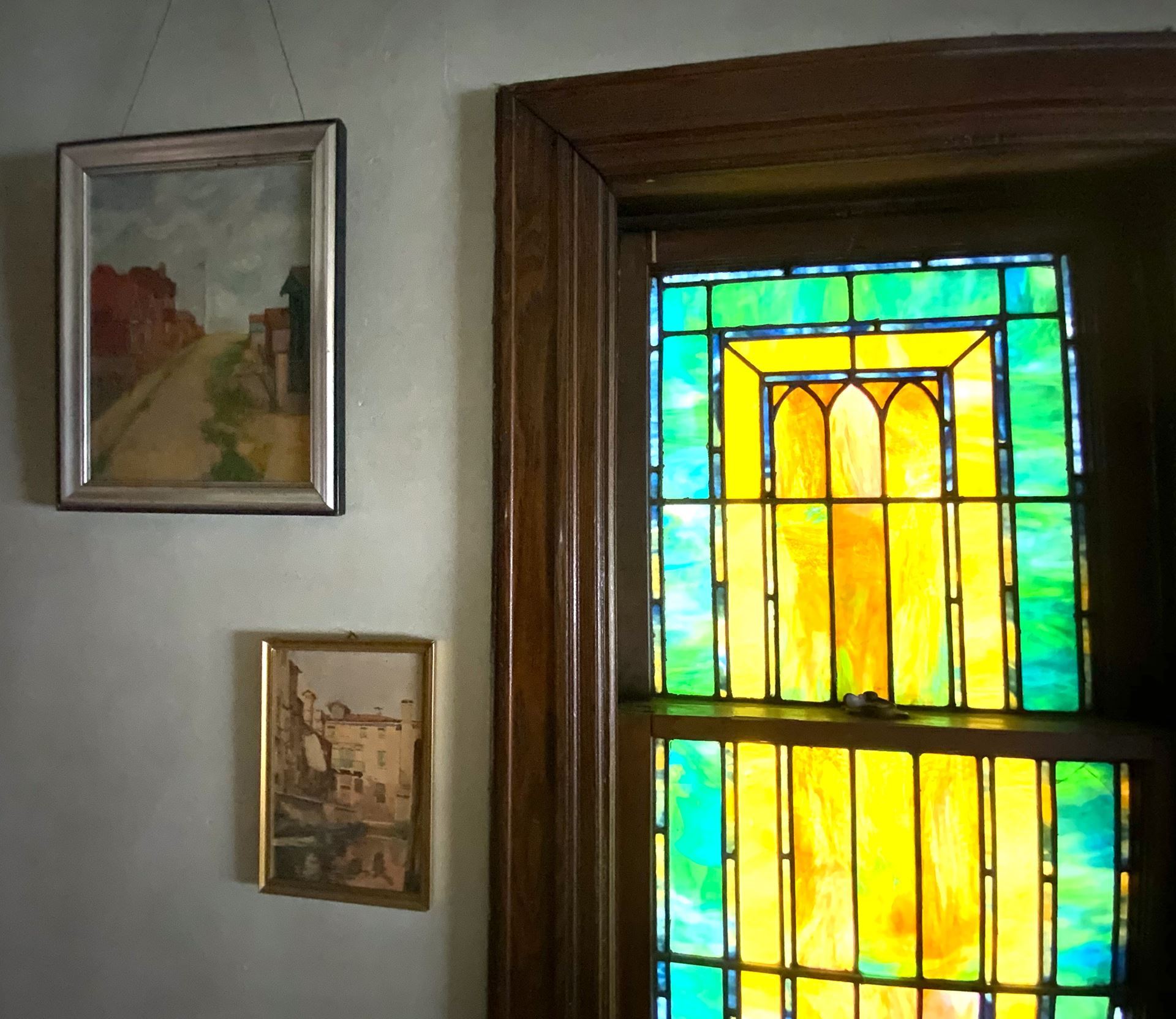
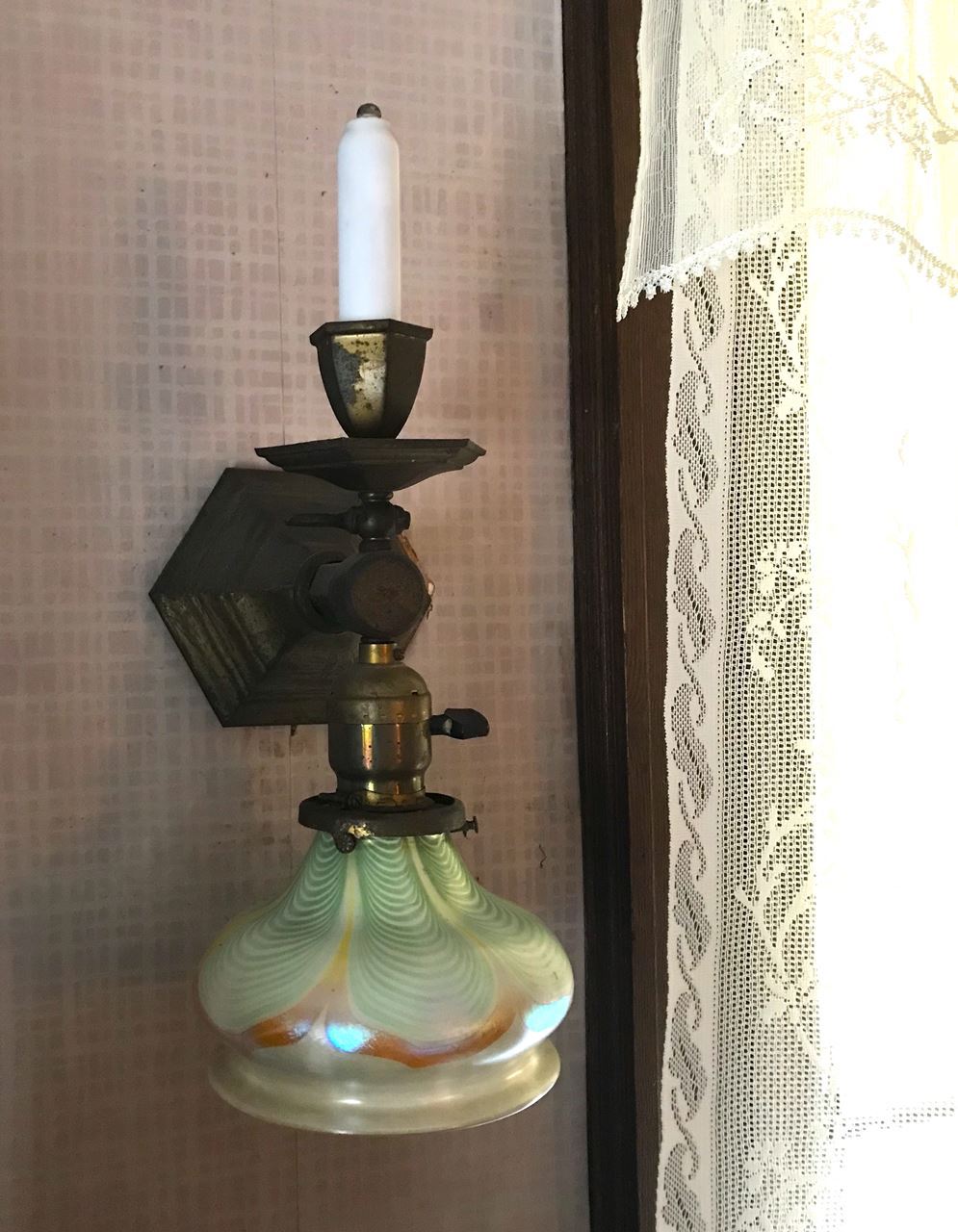
In the home there are several stained-glass windows and delicate tiffany-style lamp shades that evoke the earlier era of the home's construction sometime in the early days of the 20th century. There is the green detail on the “modern” gas stove and the assortment of dishes on the kitchen table that sit as if waiting in anticipation for the arrival of an afternoon guest. There are lamps made of pressed metal, Bakelite, and ceramic in varying shades of green; indeed, there is a lamp style for every occasion. In the living room a decorative detail on a rattan armchair, the quirky English-style Knole sofa, and the linoleum rug in the pantry all hint at variations on the theme. There remains a linoleum rug in the upstairs bathroom, a rose bordered green runner.
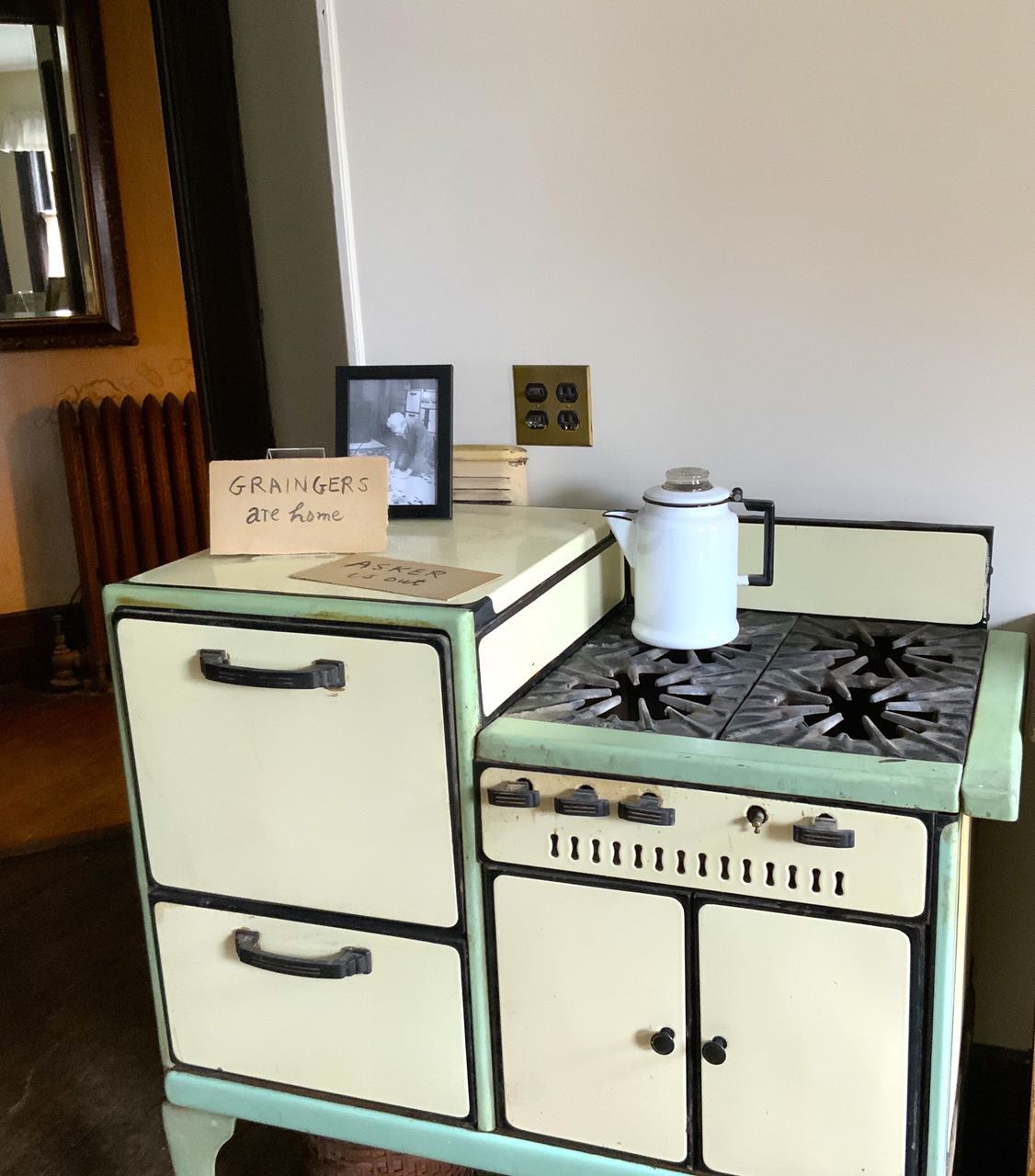
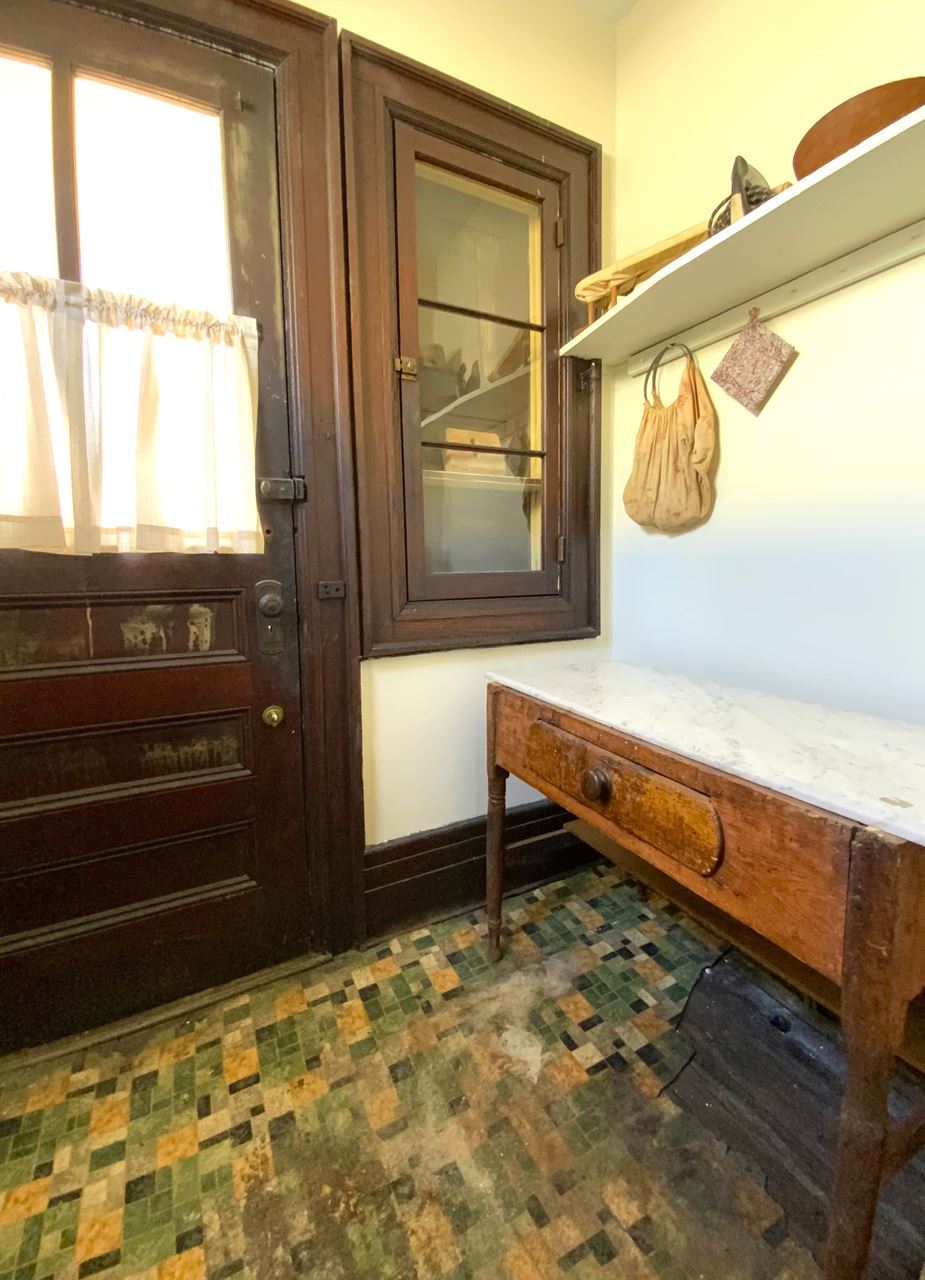
So how did the Graingers live in this house? The home was both a retreat and a launching point, a creative hub for the Free-Music collaboration between Percy Grainger and Burnett Cross and the studio where Ella designed her tiles. As I have been cataloging photographs into the museum’s database or packing documents into archival storage boxes, I uncover images of the Graingers in their home. I look for clues, scanning the photos for a familiar lamp, a chair, or a window covering. We understand that the Graingers freely moved the furniture around the house to make way for creative endeavors such as the work on the Free Music machines or impromptu music concerts.
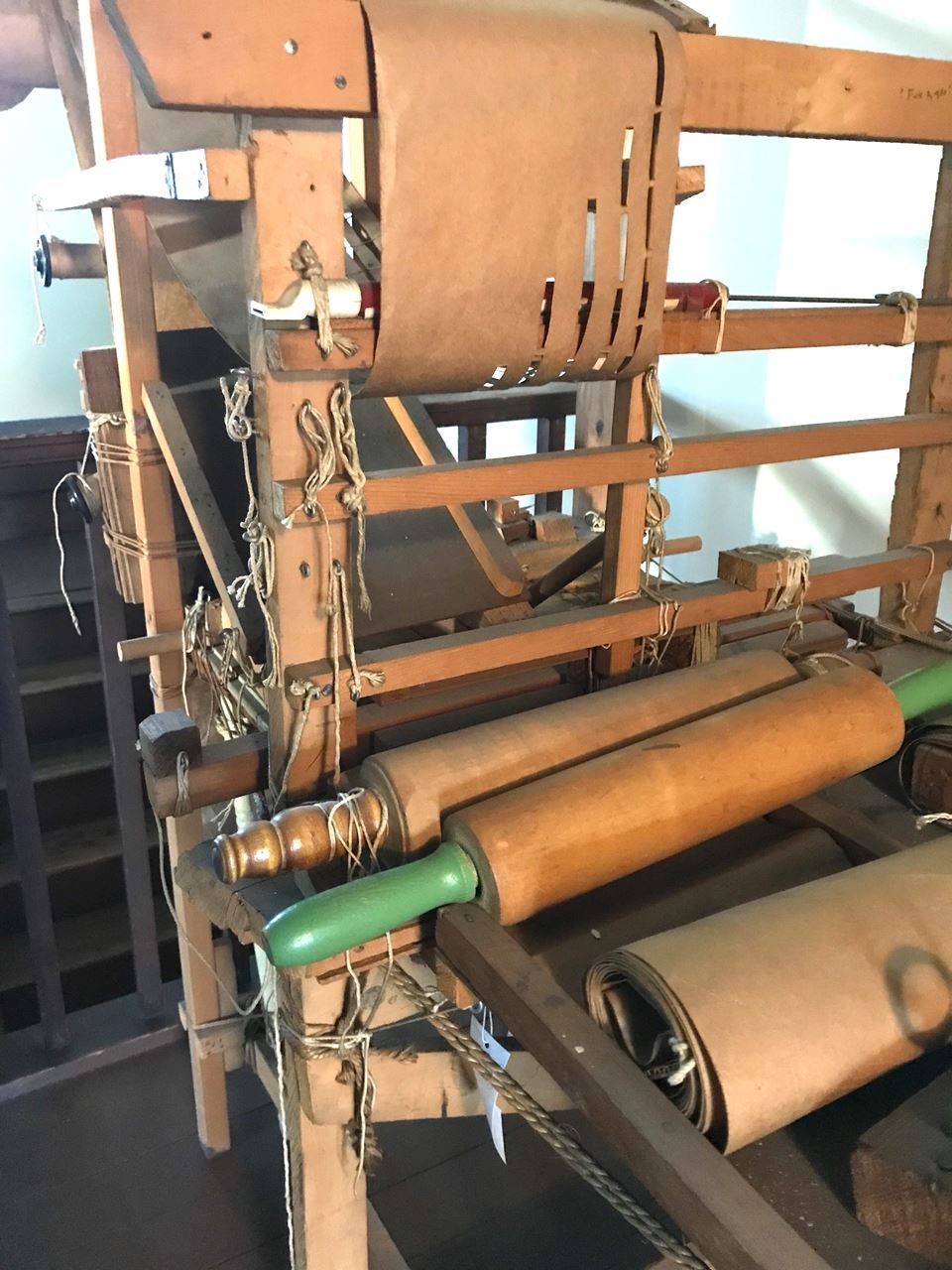 I recently helped Museum Coordinator Anne Ocone search the kitchen for a rolling pin, a replacement part needed for the Free Music machine slated to be restored this summer. In the cupboard we found a wooden rolling pin with green handles. Was this the one in the photographs? We assumed the handle was red, but with only a black and white photograph as evidence it was hard to tell. Was this one of the original rolling pins used? Maybe. Was it likely? Possibly. I can imagine Grainger walking around the house gathering materials for the Free Music machine.
I recently helped Museum Coordinator Anne Ocone search the kitchen for a rolling pin, a replacement part needed for the Free Music machine slated to be restored this summer. In the cupboard we found a wooden rolling pin with green handles. Was this the one in the photographs? We assumed the handle was red, but with only a black and white photograph as evidence it was hard to tell. Was this one of the original rolling pins used? Maybe. Was it likely? Possibly. I can imagine Grainger walking around the house gathering materials for the Free Music machine.
There is an art and science to museum work. You rely on primary source materials: photographs, letters, documents, objects, and piece together the sequence of events to craft a narrative about the totality of a collection. Ella and Percy Grainger filled their home with many objects the color green. There is something to this. I can’t know what its meaning held for them, but only observe that it was so.
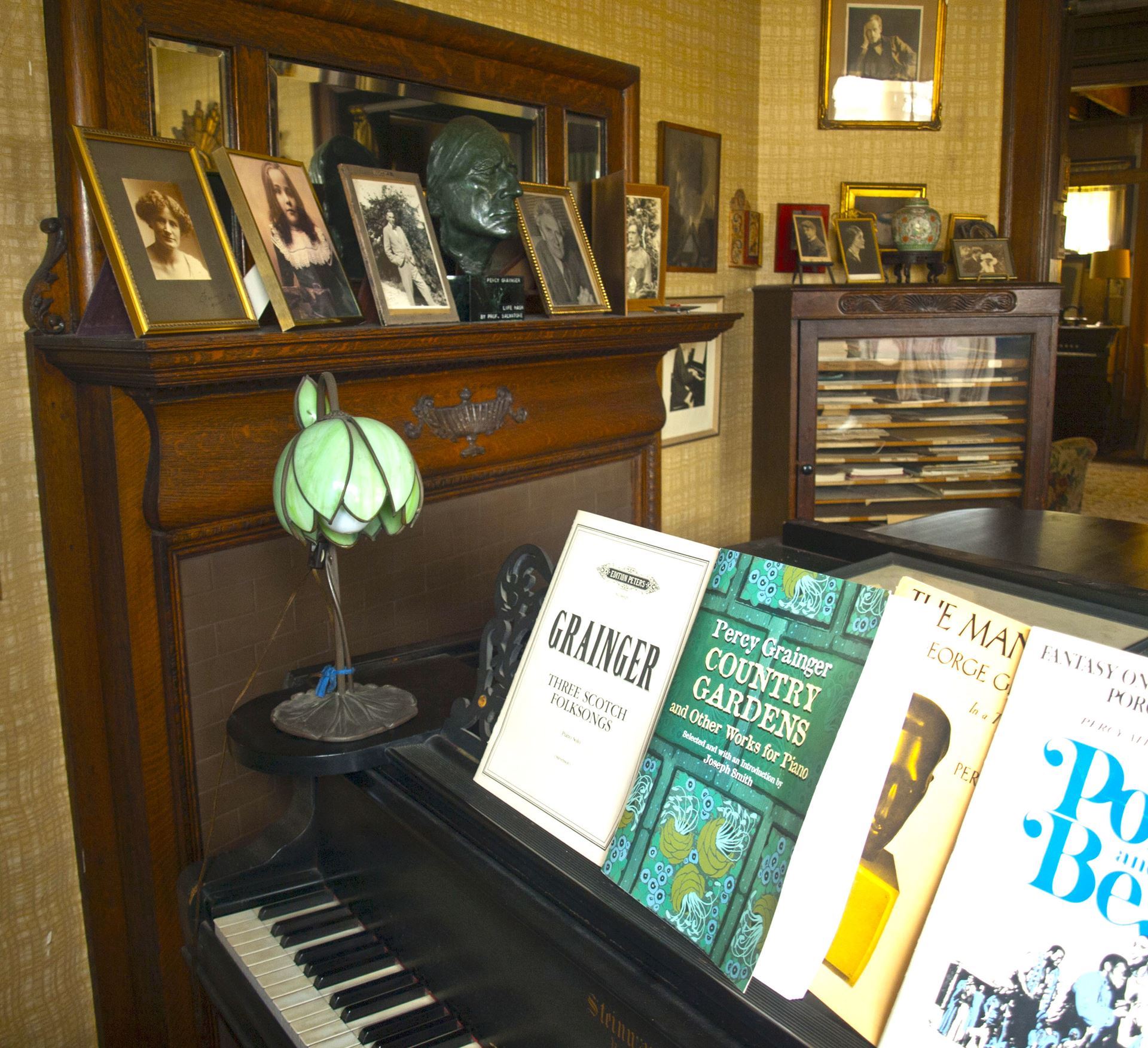
Sometimes here at the Grainger home the process of uncovering and documenting their life and work is as much about determining what things are not as to what they are. What is here and what is not. Most of their belongings were shipped off to the Percy Grainger Museum in Melbourne, Australia. I assume that this was Grainger’s attempt at curating his own narrative. Fitting these pieces that remain into the puzzle supports the vision and mission of the Percy Grainger Society of “promoting a deeper understanding of the cultural, social, and economic context of his life and work” helping “to preserve it and interpret it for future generations” (1). The house is full of evidence of their life here in White Plains. Letters, photographs, sheet music, books, toolboxes, artwork, clothing, suitcases, furniture, musical instruments, and mementos all help to tell the story of who the Graingers were, and helps to celebrate a richer understanding of their life.
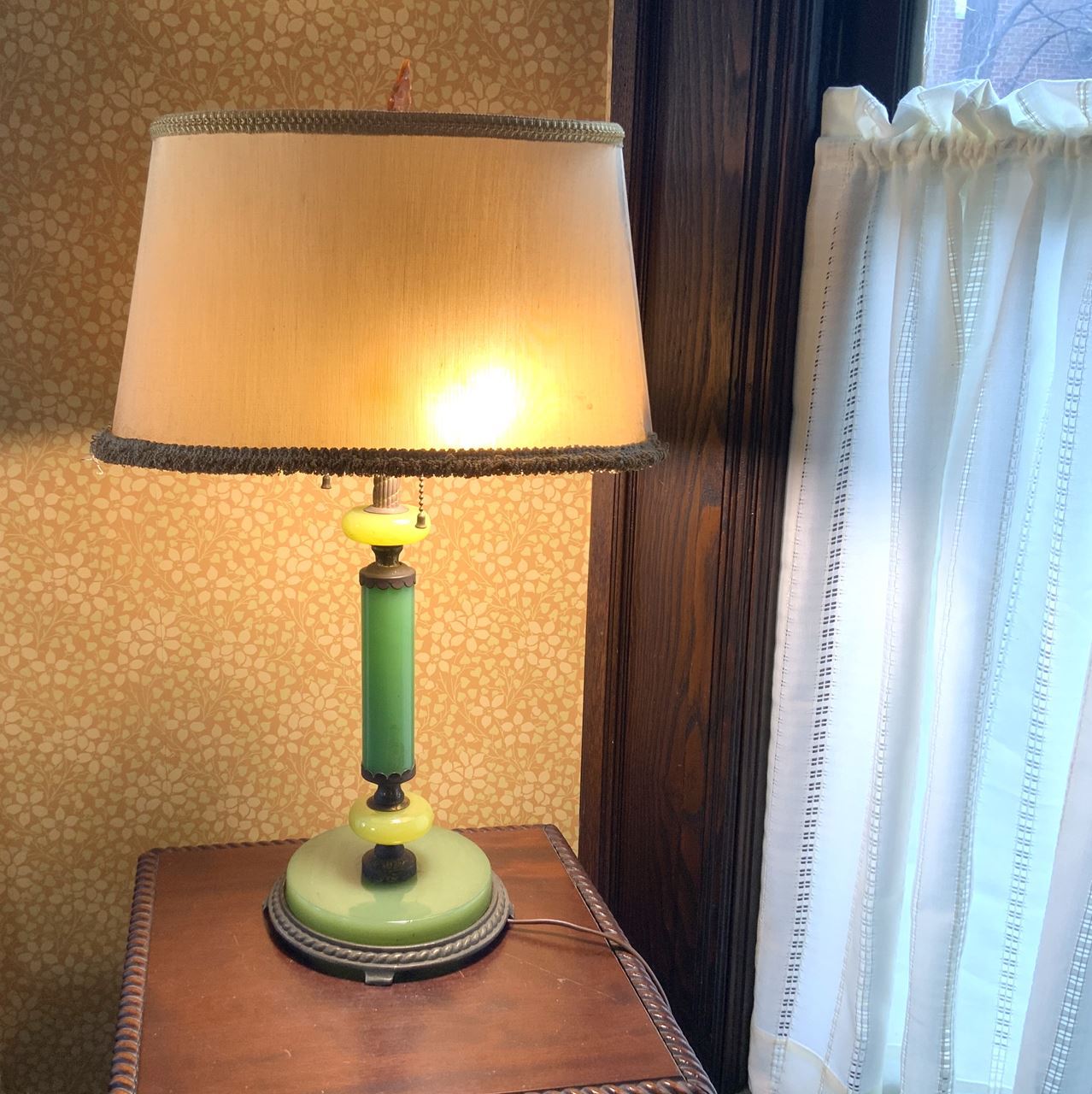 Here at the Percy Grainger House and Studio, Green seemed the perfect musings for March as we await the outdoors to join in the chorus of green found inside 7 Cromwell Place. With the hope of brighter, lighter days ahead I look forward to the arrival of the yellow daffodils of April and the Spring Open House & Jazz concert here on April 10th.
Here at the Percy Grainger House and Studio, Green seemed the perfect musings for March as we await the outdoors to join in the chorus of green found inside 7 Cromwell Place. With the hope of brighter, lighter days ahead I look forward to the arrival of the yellow daffodils of April and the Spring Open House & Jazz concert here on April 10th.
Stewart Lee March 9, 2022
(1) .www.percygraingeramerica.org